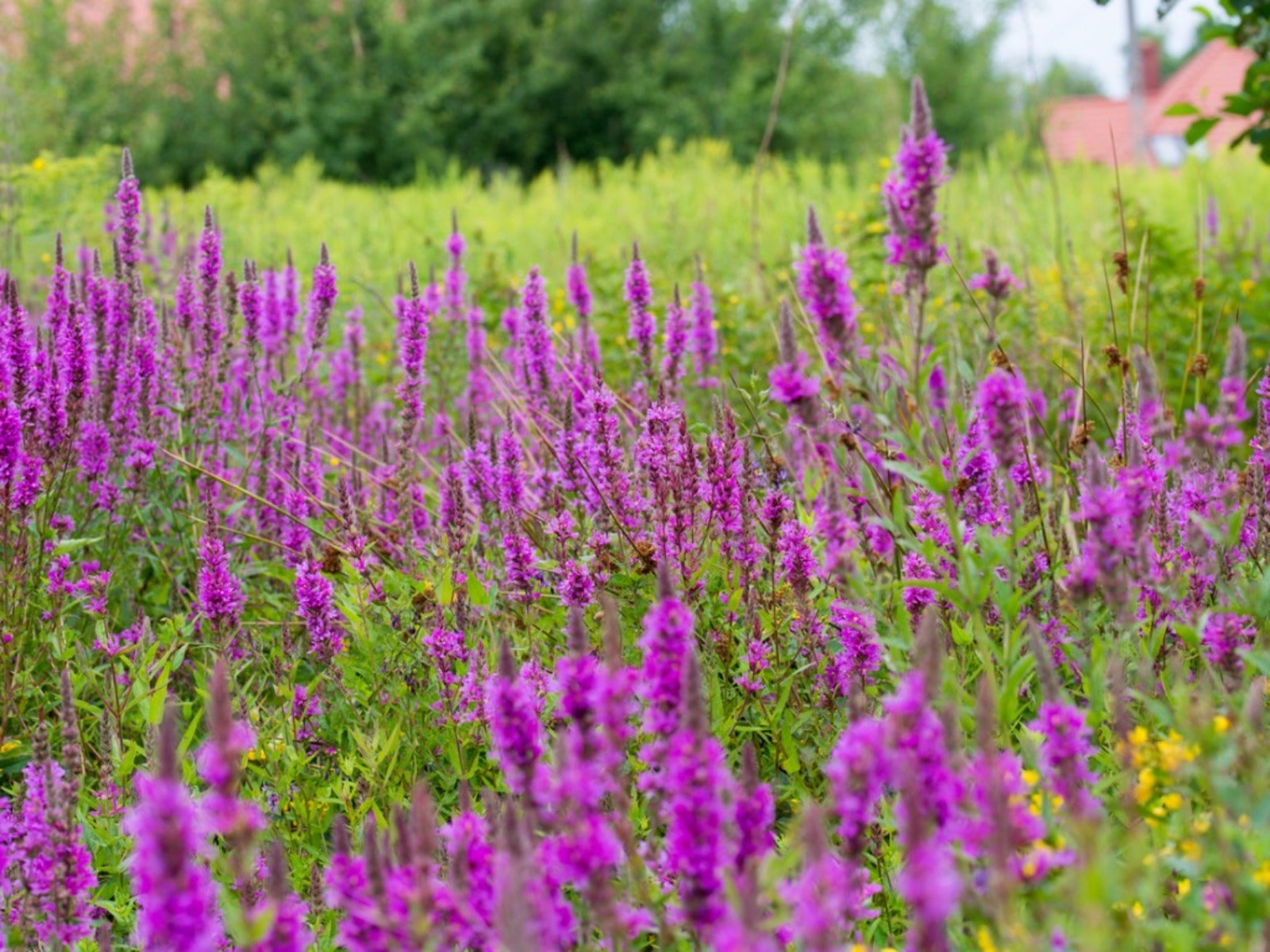Most Invasive Species In Michigan And The Upper Midwest


Invasive plants are species that are not native to a region and that cause harm to the local ecosystem. For instance, they outcompete native plants, limit food resources to wildlife, or even emit toxins that prevent other plants from growing. There are several invasive plants in Wisconsin, Michigan, Minnesota, and Iowa, but read about these that are some of the worst.
East North Central Invasive Plants
Phragmites
There are several wetland invasive species in Iowa, Michigan, Wisconsin, and Minnesota. Among the most insidious in these natural areas is phragmites (Phragmites australis). It is an impressive plant, growing up to 13 feet (4 m) tall with a feathery, purplish inflorescence at the top of the stalks.
There is a native subspecies, but an invasive one has taken over many marshes, ponds, and wetlands throughout the Midwest. The invasive subspecies is P. australis australis. The introduced subspecies forms denser stands. It outcompetes other plants and creates vast monocultures.
Another issue with invasive phragmites is that they tend to hold onto dead stalks from previous seasons. These linger in place and present fire hazards. Control of this subspecies is challenging and usually requires a permit to use chemicals followed by mowing. If you have phragmites on your property, be sure it is the invasive subspecies before attempting control.
Garlic Mustard
Among invasive Wisconsin plants, and other Midwest states, garlic mustard is one of the most persistent. Alliaria petiolate is native to the woodlands of Europe and is well adapted to Midwestern woods. Early settlers brought it over for its edible and medicinal properties.
It grows very well here, emerging earlier in the spring than many native species, producing hundreds or thousands of seeds per plant, and creating dense stands that completely crowd out native wildflowers. The monoculture that can develop where garlic mustard grows harms wildlife by limiting food resources.
Garlic mustard has toothed, heart-shaped leaves and small white flowers on stems that grow two to four feet (0.6 to 1.2 m) tall. If you see these in your garden, pull them up in spring before they can produce seeds. Effective control takes years of effort because the seeds can survive for about seven years in the ground.
Sign up for the Gardening Know How newsletter today and receive a free copy of our e-book "How to Grow Delicious Tomatoes".
Giant Hogweed
Among invasive plants of the upper Midwest that can actually harm people is giant hogweed. Heracleum mantegazzianum is native to Asia. Its impressive size and appearance brought it to Europe and the U.S. as a unique ornamental. Giant hogweed can grow as tall as 20 feet (6 m). It grows tiny white flowers in umbrella-like clusters, much like Queen Anne’s lace.
What really makes giant hogweed problematic is its sap. It contains a photosensitive substance that activates in sunlight, causing a severe rash called photo-dermatitis. The rash can be very painful and cause blistering. If you think you might have come into contact with giant hogweed, it is essential to change clothing and wash your skin immediately.
This plant can unknowingly cause harm because it looks a lot like less insidious species, including cow parsley, Queen Anne’s lace, angelica, and wild parsnip. Make careful comparisons before handling a plant that resembles giant hogweed. Don’t try to remove it yourself. Contact your local extension office for advice and assistance.
Common Buckthorn
Native to Europe and Asia, common buckthorn has taken over many areas of the Midwest that would normally host a diversity of native shrubs. Rhamnus cathartica was brought to North America as an ornamental but now is well naturalized.
Common buckthorn outcompetes other native shrubs that produce nutritious berries and fruits that birds and other wildlife eat. Buckthorn also produces a lot of berries, but they are low in nutrition. This results in harm to wildlife but also contributes to its spread as birds eat the berries and distribute seeds.
Invasive buckthorn is a large shrub with simple green leaves with prominent, parallel veins. The male and female flowers grow on different shrubs. The berries on female plants are small, round, and purplish-black. The twigs have thorns at the tips.
Because it grows large and densely, buckthorn can be difficult to control. It’s best to fully remove smaller shrubs. For larger shrubs, you can cut them down to the ground and use a recommended herbicide to prevent regrowth.
While these are some of the worst, invasive plants of the upper Midwest are numerous. Learn what is listed as invasive in your state and area and watch for them in your garden and favorite natural areas.
Note: Any recommendations pertaining to the use of chemicals are for informational purposes only. Chemical control should only be used as a last resort, as organic approaches are safer and more environmentally friendly.

Mary Ellen Ellis has been gardening for over 20 years. With degrees in Chemistry and Biology, Mary Ellen's specialties are flowers, native plants, and herbs.